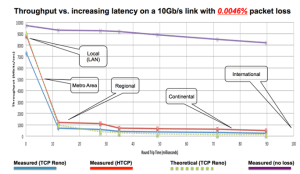In the  realm of technology, trends, and concepts often mirror patterns found in nature. One such parallel can be drawn between the ongoing, extensive Virtual Private Network (VPN) usage and the infamous lemming phenomenon. Just as the misinformed notion that lemmings intentionally throw themselves off cliffs became a symbol of mass delusion, the prevailing belief that increasing bandwidth is the panacea for VPN-related issues reveals a similar fallacy propagated by VPN technology manufacturers.
realm of technology, trends, and concepts often mirror patterns found in nature. One such parallel can be drawn between the ongoing, extensive Virtual Private Network (VPN) usage and the infamous lemming phenomenon. Just as the misinformed notion that lemmings intentionally throw themselves off cliffs became a symbol of mass delusion, the prevailing belief that increasing bandwidth is the panacea for VPN-related issues reveals a similar fallacy propagated by VPN technology manufacturers.
The Lemming Story
In 1958 Disney produced a documentary called White Wilderness. The documentary, depicted these small rodents rushing off cliffs en masse, creating a powerful metaphor for following the herd without questioning. In the same vein, the tech industry’s prevailing wisdom has been to throw more bandwidth at VPN problems, hoping it will miraculously solve connectivity issues for remote workers.
VPN Bandwidth Fiction vs Fact
Manufacturers of VPN technology, like disingenuous filmmakers, have propagated this misconception. Just as Disney staged the lemming scene for dramatic effect, these manufacturers have perpetuated the myth that larger bandwidth pipelines can compensate for the inherent shortcomings of traditional VPNs. But, just as lemmings didn’t willingly dive off cliffs, increasing bandwidth doesn’t necessarily address the root issues of VPN inefficiencies.
 Effective VPN Bandwidth vs Raw Bandwidth
Effective VPN Bandwidth vs Raw Bandwidth
IT professionals, akin to cautious observers of nature, are increasingly realizing that effective bandwidth – rather than raw capacity – is the crux of the problem. A mere 0.5% packet drop rate can lead to over 95% effective bandwidth loss, resulting in sluggish connections and frustrated remote workers. This subtle but significant detail is often lost in the cacophony of bandwidth-boosting promises.
ZTNA Fails To Deliver over VPN
Enter Zero Trust Network Access (ZTNA), heralded as the silver bullet to VPN troubles. However, it’s important to note that ZTNA, while a significant improvement in security, doesn’t provide the comprehensive solution promised. Much like how lemmings, although less likely to fall off cliffs, still face other challenges, standard ZTNA solutions are still hampered by packet loss issues, impeding their ability to deliver consistent and efficient connections
CloudBrink and HAaaS Saves The Day
Amidst this landscape of misinformation and partial solutions, one solution is beginning to emerge: Cloudbrink’s Hybrid-Access-as-a-Service, a high-performance ZTNA service with Automated Moving Target Defense. Headed up by leaders from the VPN, security, and networking world, these visionary individuals at Cloudbrink recognized the issues plaguing both traditional VPNs and ZTNA technology. Like lemmings veering away from the cliff’s edge, they broke away from the herd and founded Cloudbrink with the resolve to solve the performance issues and enhance the security of remote access services. Cloudbrink’s technology has proven itself in overcoming packet loss issues to achieve remarkable results. Reports show that their solution can increase effective bandwidth by up to 30 times, offering a genuine remedy to the productivity-sapping troubles faced by remote workers. Cloudbrink outperformed all other vendors at every level of network reliability, even when the connection was 100% reliable.
